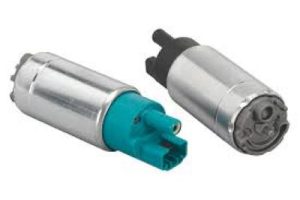To install a fuel pump properly, the correct wiring and mounting are important, but installation must also meet manufacturer's specifications for long-term performance. One of them is that the wire gauge needs to be appropriate. A standard fuel pump draws 10 to 15 amps: Voltage drop demands at least a 12 or 14 AWG wire. Coping with voltage drops by even 5% can decrease pump output by a hefty 20% and tributes to one of the key causes of fuel starvation. If you install a relay, rated at 30 to 40 amps for the pump it will get all the current it needs without overloading any circuits in your electrical system.
Securely mounting the fuel pump is important to limit vibrations and movement which will inevitably cause damage to the pump in time. Install an inline fuel pump close to the rear of the car (fuel tank) but be sure to use rubber mounts so that vibration and noise are not transmitted back into the car. A fuel pump that is not securely mounted may cause the fuel lines abrasion which will lead to either leaking or incorrect pressure,HuffMyer said. Most modern vehicles use in-tank pumps located within a protective casing installed into the patient fuel tank to help prevent it from functioning adequately. Poor mounting in this scenario would lower the lifespan of the pump to under 50,000 miles instead of its usual life span between 100,000 and 150,000 miles.
To ensure against subsequent problems, the fuel system should be cleaned prior to installation. That also means that installation of a new fuel filter in line with the pump will help protect it from contaminants and reduce wear on the pump. Change your filters every 30,000 to 50,000 miles for constant fuel movement/pressure. This can cause a pump to operate 15% short of design and lead to premature failure.

When completing installation and are presented with the very scientific question... “HOW TIGHT FUEL LINE GO?” It depends on fitting type Rubber hoses connecting the pump to its fuel lines should be clamped down tightly so that there is no chance of leakage, but not too tight, which would crush the hose. N Lines & Quick Connect Fittings: Should be torqued to manufacturer specs, generally between 10-20 ft-lbs.
Then, testing the fuel pressure after a new pump is installed to ensure that it delivers fuel within the recommended pressure range of 40 to 70 psi for most motor vehicles. Kemso high-output pumps can do more than 90 psi, but the stock pump in the XC90 puts out something less than that. Installation with fuel pressure gauge to verify correct function and integrity.
For additional details on securing fuel pump installs, as well as to find high-response solutions, visit Fuel Pump: where you'll get Kemso gives rapid response rules in addition to merchandise intended for reliable efficiency.